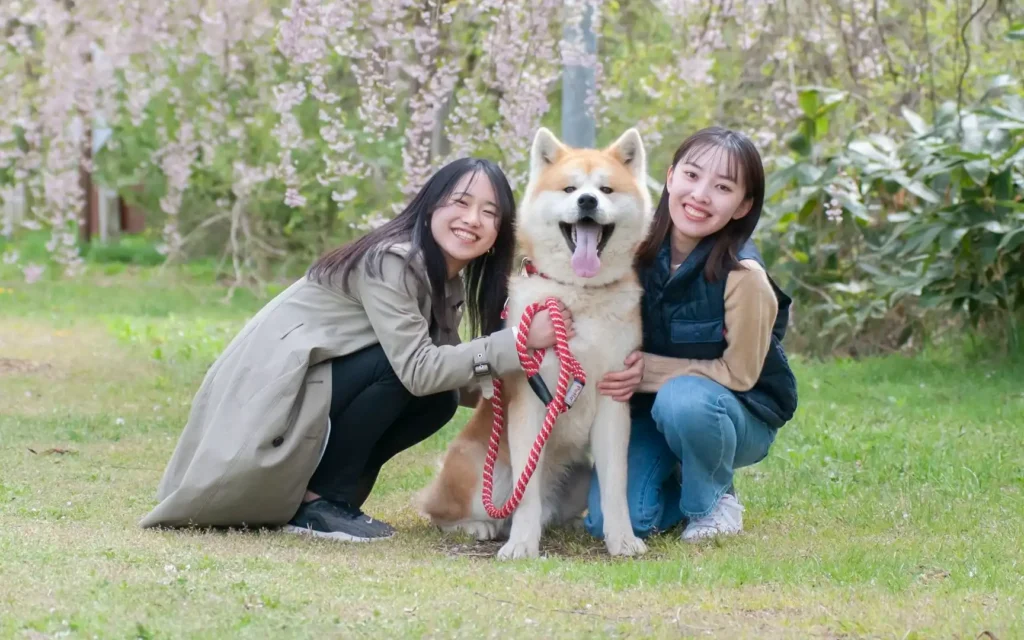We all want our dogs to be with us for a long time, because every dog is like a star in our life, shining warmly and filling the owner’s heart.
But just like stars, there is a time limit for them to blossom. We are curious about the lifespan of our dogs because we want our most loyal companions to last a little longer.
Apart from the limitations of their own breeds, is it possible to provide them with good elderly care, so that this shining star can illuminate our lives for a longer period of time? Let’s read on!

Life Expectancy by Breed
Let’s take a look at the average lifespan of various common dog breeds!
But remember that this is only an “average life expectancy” and that the life expectancy of each dog is actually affected by “personal differences”, “housing environment” and “medical care”.
Different breeds of dogs may have different health considerations and some breeds may be more susceptible to specific diseases, all of which can affect life expectancy by as much as 5-10 years!
| Dog Breeds | Average life expectancy | Dog Breeds | Average life expectancy |
| Poodle | 10-15 years old | Shiba Inu | 12-16 years old |
| Golden Retriever | 10-12 years old | Yorkshire Terrier | 15-18 years old |
| Labrador | 10-12 years old | Siberian Husky | 12-14 years old |
| Shepherd | 9-13 years old | Welsh Corgi | 12-15 years old |
| Bichon Frise | 12-15 years old | Chihuahua | 12-20 years old |
| Doberman Pinscher | 10-13 years old | Pug | 12-15 years old |
| Maltese | 12-15 years old | French Bulldog | 10-14 years old |
| Taiwan MIX Dog | 15-18 years old | English Bulldog | 8-10 years old |
| Pomeranian | 12-16 years old | Dachshund | 12-16 years old |
Dog Life Conversion
To us, dogs’ lives are always so short and hurried. The average dog’s 1 year old is equivalent to our 7 years old. When it feels like they are just accompanying us for “10 years”, they are already “the elders of the dog world in their seventies”.
The life span of a dog can pass very quickly, so by converting the life span of a dog, we can know exactly how old it is in the human world. If your dogs are already older, you can’t take care of him in the same way as you would a young dog!

| Dog Years | Small dogs Less than 10 kilograms | Medium-sized dog 10-30 kg | Large Dogs 30-50 kg |
| 1 month | 1 year old. | 1 year old. | 1 year old. |
| 1 year old. | 17 year old. | 17 year old. | 12 year old. |
| 2 year old. | 24 year old. | 23 year old. | 19 year old. |
| 3 year old. | 28 year old. | 28 year old. | 26 year old. |
| 4 year old. | 32 year old. | 33 year old. | 33 year old. |
| 5 year old. | 36 year old. | 38 year old. | 40 year old. |
| 6 year old. | 40 year old. | 43 year old. | 47 year old. |
| 7 year old. | 44 year old. | 48 year old. | 54 year old. |
| 8 year old. | 48 year old. | 53 year old. | 61 year old. |
| 10 year old. | 56 year old. | 63 year old. | 75 year old. |
| 12 year old. | 64 year old. | 73 year old. | 89 year old. |
| 14 year old. | 72 year old. | 83 year old. | 103 year old. |
| 16 year old. | 80 year old. | 93 year old. | 117 year old. |
| 18 year old. | 88 year old. | 103 year old. | 131 year old. |
| 20 year old. | 96 year old. | 113 year old. | 145 year old. |
When Do Dogs Start Aging

Generally speaking, if we use 20 kilograms as the cut-off point, smaller dogs under 20 kilograms usually live longer, while larger dogs over 20 kilograms live shorter. Scientists believe that this state of affairs may be related to a hormone that encourages dogs to grow in size, but the mechanism is not yet clear. What is certain is that large dogs grow faster.
However, this causes some organs or mechanisms in the body to “underdevelop”, making them prone to “complications” and “diseases”.
Therefore, it is possible that large dogs are more prone to health problems than small dogs.
Because of the difference in lifespan, there is a difference in when dogs reach old age. “Small dogs begin to age rapidly at 11 years of age, medium dogs at 9 years of age, large dogs at 7 years of age, and very large dogs at 5-6 years of age. No matter how healthy a dog has been in the past, aging is a physiological phenomenon that is bound to happen.
As a dog ages, it is inevitable that its physical strength and vitality will begin to differ from that of its youth.
Caring for Older Dogs

When we realize that our dogs are no longer young, it’s time to think about their future “aging”.
By raising or rehoming your dog, you can make the rest of your dog’s life less burdensome and still maintain a sense of freedom. It is possible that a little more understanding and care knowledge will help your dog to live a longer life!
1. Proper Diet Management
Choose a dog food or canned food made specifically for “senior dogs”, which usually contains “easily digestible” proteins and fats, as well as “nutrient-enhanced” and “antioxidant-enhanced” ingredients.
Try to feed your dog at regular intervals throughout the day. A regular diet is good for your dog’s “gastrointestinal health” and maintains his body’s defenses. And control the amount of food your dog eats, do not overweight, although the dog’s digestion and absorption may get worse as they get older, it is also good to leave some money on the body.
However, an overweight body will still give the dog “joints” and “heart” a great burden, the figure should be maintained and not out of control!
2. Regular medical checkups
Regular checkups of blood pressure, blood glucose, kidney function, pancreas function, etc. are recommended for early detection and treatment of diseases by your veterinarian.
Dental checkups are an important part of these checkups, as dental problems can lead to eating problems and chronic infections.
“Vaccination is essential, and it is recommended that the dog’s immunity be maintained, especially as the dog ages and becomes more resistant to disease.
3. Daily moderate exercise
It is important to take your dog for regular exercise walks every day. For small dogs that do not need to go out for walks, it is also recommended to have playtime every day! It helps to maintain muscle strength and enhance metabolism. Can also give the dog enough “wind”, relaxation time, moderate “consumption of energy”, can also help the dog more stable emotions.
4. Nutritional Supplements
As dogs grow older, their bodies are weakening, so giving them the right nutritional supplements can help promote their health.
Joints, heart, eyes, etc. are areas where older dogs are more likely to encounter problems. Supplementation of Omega-3 fatty acids, collagen, Q10 and lutein can help to maintain the health of your dog.
5. Companionship and Soothing
Stabilizing the dog’s mood can help reduce anxiety and loneliness. The companionship of the owner is the main source of security for the dog. Just “talking softly” to the dog or occasionally “petting” the dog when doing something beside it can give the dog a comfortable mood, which has a significant positive effect on its body and mind!
On the other hand, it is difficult for a dog that is depressed all day long to maintain a healthy body and mind.
This not only affects the quality of their daily life, but may also indirectly affect the length of their lives.
Especially for “senior dogs” in the family, as they age, their body functions gradually deteriorate and their mobility is limited, so they need our companionship and support even more.
6. Barrier-free environment
In daily life, we can provide “non-slippery” flooring, and use “slopes” to replace steps or areas with height differences that require climbing, stepping or even jumping to pass. This will reduce the risk of falls due to unsteady walking.
It is also recommended that “lighting” be added to the corners of the home where dogs are often active to help older dogs with poorer vision adapt better to the environment and live more comfortably.
